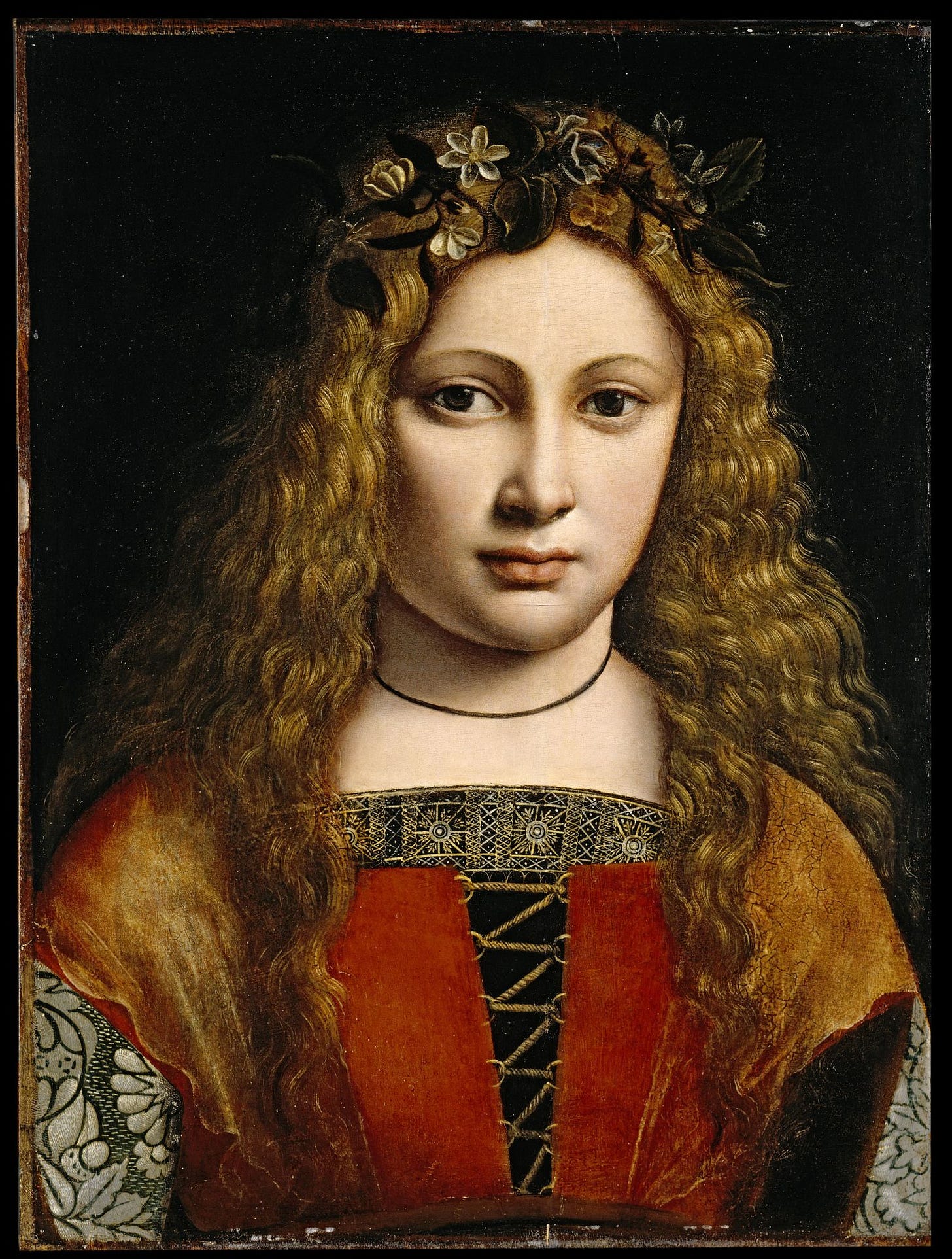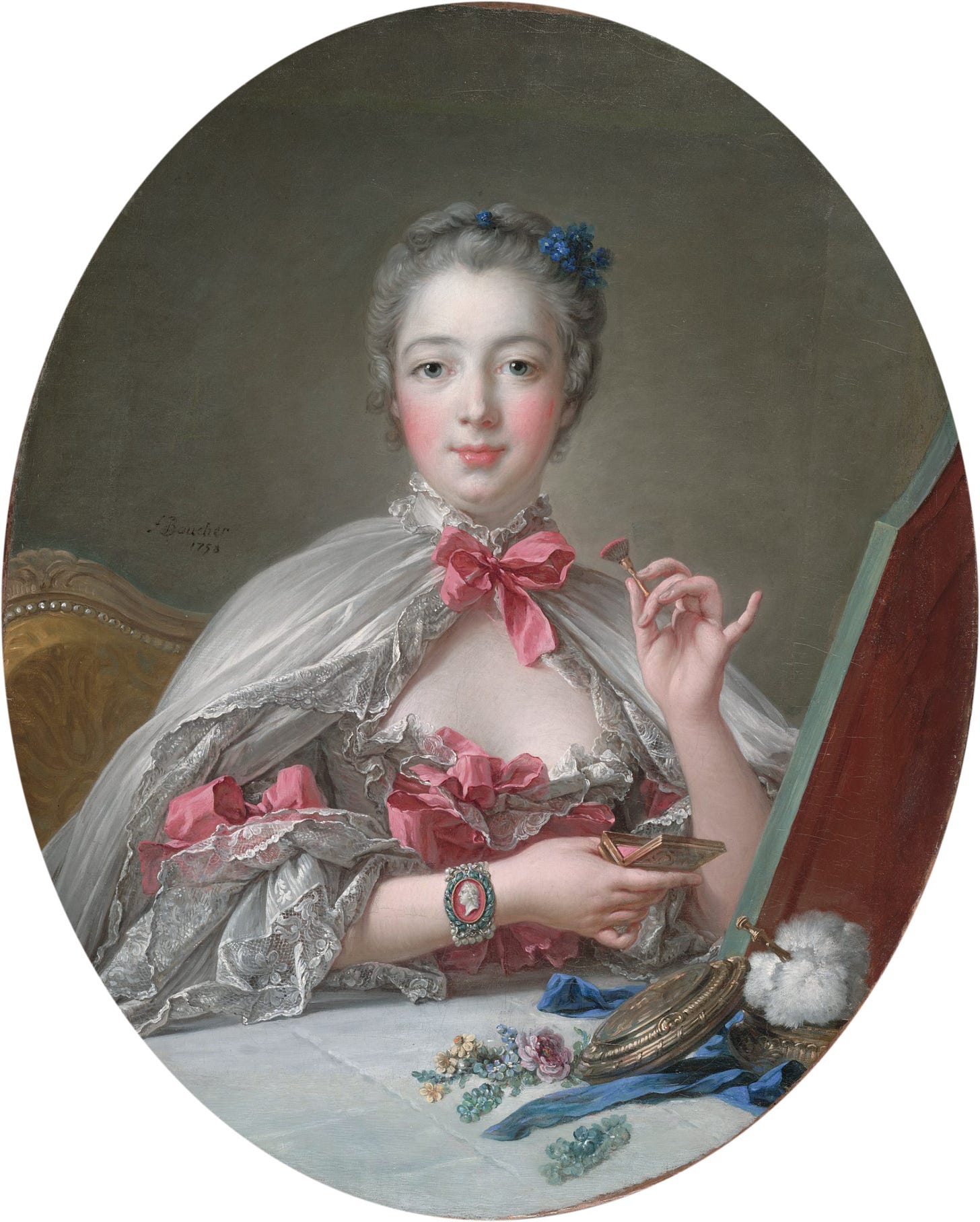Toxic beauty (I)
Human beings love beauty. We love it so much, that we are willing to risk our own health for it. In this post, I share some historical beauty practices that were very popular, and highly toxic.
The yearning to be beautiful it´s one of the strongest in our lives: we want to be admired, accepted, and desired. It´s not a trifle want, because it responds to some of our fundamental needs - being socially accepted, getting a partner and maybe having children. As a result, people have experimented with many materials and substances to alter their appearance, trying to look more attractive or striking. Makeup, body painting, tattoos, piercings or hair dyes are some examples of this.
Many beauty practices are painful or difficult to endure: tattoos and piercings inflict injuries on our bodies, and many of the powders and pastes used for makeup and dyes are not harmless either. From a young age, we learn that looking pretty entails being uncomfortable at best (think of hair removal or wearing high heels) and can be deadly at worst (like a plastic surgery gone wrong, or a serious eating disorder).
In our current Western culture, enduring pain to attain beauty is mostly expected of women, but in other cultures, and at other times in history, beauty practices could be equally used by both men and women. However, it´s interesting to note that personal adornment it´s one of the earliest ways to mark gender differentiation, probably since the Stone Age; so, even if men and women alike had tattoos, it would be a different kind of tattoo. An example could be Maori facial tattoos, that were bigger and more intricate in men than in women, and had different designs.
Tattoos and piercing could be dangerous due to infections or scarring, but makeup was not much better, since many of the substances used as cosmetics throughout history were toxic. People were mostly aware that these practices were not ideal for their health, or that they could have bad consequences— like poisoning— but this knowledge didn´t stop them from using them. Historian Michel Pastoreau sums it up perfectly in his book White: the history a color: “The desire to be beautiful was stronger than the fear of death”.
And that was exactly the case with the examples in this post: two beauty practices that were toxic, but remarkably popular and widely used. I plan to make a series with this theme, so there will be another post about toxic beauty, and maybe more, if I find other interesting examples.
Toxic white: lead makeup
Lead white it´s a basic lead carbonate that´s been artificially made since ancient times, and it´s not only the most widely used white pigment in the history of painting, but one of the most used makeup powders as well. In Ancient Greece, hetaeras, highly-educated courtesans, applied a face mask of lead white to their faces during the night, and then used a lighter version of the powder as makeup during the day. Their skin looked whiter as a result, and this was one of the ways wealthy women had to declare their status: they could keep an immaculate pale skin because they didn´t need to work in the fields under an unforgiving sun.
During the 16th, 17th and 18th centuries wearing lead white powder as makeup was even more popular. To be fair, lead white is a good way to cover skin imperfections, and there have been some research projects to study if it was similar to the makeup we use today. It actually achieves a similar result, but the secondary effects are very different. Even though in the beginning lead white made your skin look nicer, in the long term, using it on the skin caused pimples, scarring and balding. This lead to using more white powder, creating a vicious cycle that only worsened the skin and health of the wearer
Queen Elizabeth I of England (1533-1603) created the trend of super white skin wearing lead white on her face. It may have been the reason why she was bald close to her forehead, and had some scarring on her face. During the 18th century, wearing white powder and very rosy cheeks became the dominant fashion, for both men and women. People actually suspected this wasn´t the best idea, because it was common gossip that using too much makeup could kill you.
Inhaling lead white was very dangerous as well. Once lead it´s in our system, there is no way to expel it from the body. It´s highly toxic, causing abdominal pain, confusion, nausea, organ failure and, ultimately, death. Painters suffered lead poisoning too, because they commonly prepared their own paint, and lead white was an essential color in every artist´s palette. Goya is considered the classic example of an artist who suffered lead poisoning. Lead can cause neurological damage, and it´s been speculated that it was the reason behind his mental state when he made his famous black paintings.
Toxic eye drops: belladonna
Atropa bella-donna, commonly known as deadly nightshade or just belladona, it´s a plant of the same family as tomatoes and potatoes native to Europe and Western Asia. The plant has pretty purple flowers and shiny, black berries. It´s one of the most poisonous plants in the world, but it has been used as a cosmetic since at least the Roman empire. Both the leaves and the berries are highly toxic, especially when ingested. Eating a few berries is lethal for children and can be for adults as well (better not try any berries you come across if you are not familiar with them).
People have known the plant´s properties for millennia, and have used it as medicine, poison and cosmetic. Carl Linnaeus named the plant following ancient Greek mythology: Atropos was one the Moirai or Fates, the three women who decided the fate of every person. Atropos performed the last task of the trio— after her sisters had spun and measured the thread of life, Atropos was in charge of cutting it. She was the personification of the moment of death.
The other part of the name, Bella-donna, alludes to its use as a cosmetic: it means beautiful woman in Italian. Women in the Renaissance employed Belladonna´s berries juice as eyedrops, because it dilates the pupils, and, apparently, this effect makes the eyes look more attractive. It is rumored that Cleopatra utilized another kind of nightshade for the same purpose, as well as Roman women. The Romans were perfectly aware that belladonna was a poison, and they used it as such, but some texts also recommended its effects as an anesthetic in combination with opium when performing surgery.

It´s interesting to note that dilated pupils is one the symptoms of being poisoned with belladonna, among a wide range of other alarming consequences, like delirium, hallucinations, blurred vision, confusion, loss of balance, headaches, slurred speech or convulsions. When applying belladonna´s juice in the eyes, women were poisoning themselves right away, and one has to wonder if they didn´t experience any of these symptoms, particularly the ones affecting vision. It was even rumored that abusing the eyedrops could make you blind in the long term, so they were somewhat aware of the risks, but still kept using the eyedrops.
I am fascinated by this human tendency to put beauty over health, because it is hard to understand, and we do it today same as thousands of years ago. Subscribe below for more posts about this theme in the future.







